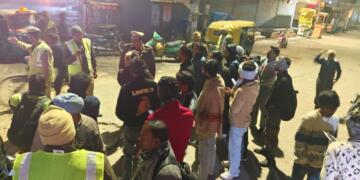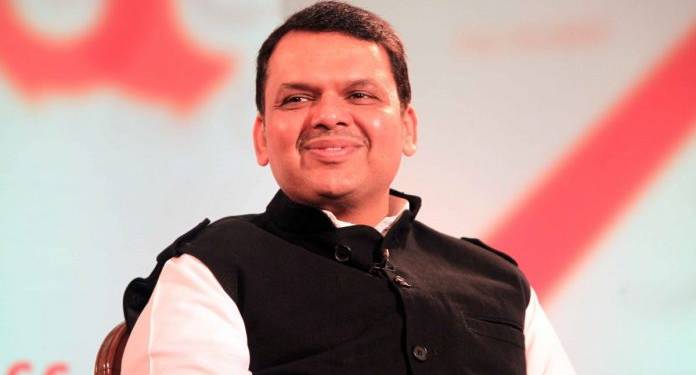What is Maharashtra to India?
Our India is home to 135 Crore people, of which approximately 12.60 Crore reside in Maharashtra alone. So 1 out of 11 Indians (9.33%) lives in Maharashtra. Maharashtra contributes USD 360 Billion (12.11%) to the USD 2,972 Billion GDP of India.
What is Mumbai to Maharashtra?
The financial capital of the country is also the state’s summer capital. While Maharashtra’s economic progress is key to India’s progress, the epicentre of this development is Mumbai.
The present government, led by Chief Minister Devendra Fadnavis assumed power in 2014 after 15 years of NDA rule by an assortment of Chief Ministers. He is, in fact, the first Chief Minister of Maharashtra in the last 45 years to complete a 5-year term, a feat last accomplished by Shri. Vasantrao Naik during his tenure as Chief Minister from 1967 to 1972.
Mumbai Metropolitan Region (MMR), Pune Metropolitan Region (PMR) and Nagpur Metropolitan Region (NMR) are the 3 largest urban settlements in the state, of which the MMR is the largest. As luck would have it, I was born in Nagpur, educated in Mumbai and have my business in both Mumbai & Pune. I travel between the 3 cities frequently and am witness to the improvement in Infrastructure, Law & Order & Civic Amenities here. For the sake of brevity, I would like to focus this article on Mumbai and its surrounding regions, comprising the MMR and look at the 3 major infrastructure projects being executed in Mumbai.
- Mumbai Suburban Railway & Mumbai Metro
The first passenger railway line in Asia was laid by the East India Company between Bori Bundar (Present day Chatrapati Shivaji Maharaj Terminal) and Thane in 1853, a distance of 34 km. By 2014, the Mumbai Suburban Rail network was approximately 390 km long. This bit of trivia in the beginning of the article was important to emphasize the fact that railways in Mumbai are as old as the city itself and an integral part of the city.
1900’s to 2014
Post-Independence in 1947, Mumbai grew from a city with 30 lakh inhabitants to nearly about 300 lakh today in the region comprising the Mumbai Metropolitan Region. The basic rail infrastructure that was designed to serve at best 50 lakh people, remained stagnant, and was soon overwhelmed. Though overwhelmed, successive governments did nothing better than to pay lip service to the deficient rail service.
The mainstream media even coined a phrase to patronize the failures of the establishment, “The Spirit of Mumbai”, and it was the only option available to the common Mumbaikar to face the deficient infrastructure of the city. To grin and bear the vagaries of the seasons, from extreme humidity to scorching heat to torrential rain, was but the norm for every Mumbaikar under the idiom of “The Spirit of Bombay”.
I was a student of DG Ruparel College, and had to travel to Matunga Road from Santa Cruz daily bearing all these elements. Later, my misery increased manifold as I secured admission to an Engineering College in Airoli. The journey involved changing from Western to Central Line at Dadar, and then waiting for the NMMT bus to arrive at Thane Station.
And I have seen it all. From the mad rush at Dadar & Thane Station aiming to jump on to the moving train to secure a seat on the trains return journey to entrails of sliced cadavers being pulled off the railway tracks by fellow commuters & passersby. All this before I was even an adult. Nobody cared. Nobody bothered. Life went on. It was “The Spirit of Bombay” after all. In 2017 alone, 3,014 commuters were killed while accessing the congested Mumbai Suburban Railway Network.
The powers that be were gracious enough to conjure a “Metro Line” that connected Ghatkopar to Versova in 2007. This line, approximately 11 kms long, was opened to the public in June, 2014. Remember these numbers. 11 kms in 7 years. Mumbaikars were nonetheless happy that their woes were atleast marginally reduced.
2014 to date
The November, 2014 State Assembly Elections replaced the 15 year rule of the UPA alliance government with a NDA Government led by Devendra Fadnavis. The incoming Chief Minister, at 44 years of age was also the second youngest person to serve the state in this capacity.
Upon taking charge of the CMs office, Devendra Fadnavis embarked on an ambitious plan to provide a robust Metro network across Mumbai. Metro lines 2A, 2B, 3, 4, 4A, 5, 6, 7, 7A, 8, 9, 10, 11, 12, 13 & were planned of which Metro Line 3 is completely underground.
| Mumbai Metro Lines | ||||
| Line | Route | Status | Length in Km | Number of Stations |
| Line 1 | Ghatkopar to Versova | Completed | 11.40 | 12 |
| Line 2A | Dahisar to DN Nagar | Under Construction | 18.58 | 17 |
| Line 2B | DN Nagar to Mandale | Under Construction | 23.64 | 22 |
| Line 3 | Colaba-Bandra-SEEPZ | Under Construction | 33.50 | 27 |
| Line 4 | Wadala-Ghatkopar-Mulund-Teen Hath Naka-Kasarwadavli | Under Construction | 32.20 | 32 |
| Line 4A | Kasarwadavli-Gaimukh | Under Construction | 2.70 | 2 |
| Line 5 | Thane-Bhiwandi-Kalyan | Approved | 24.90 | 17 |
| Line 6 | Lokhandwala-Jogeshwari-Kanjurmarg | Under Construction | 14.50 | 13 |
| Line 7 | Dahisar (East)-Bandra (East) | Under Construction | 16.50 | 13 |
| Line 7A | Andheri-CSIA | Under Construction | 3.17 | 2 |
| Line 8 | CSIA (T2)- NMIA | Proposed | (35.00) | TBA |
| Line 9 | Dahisar (East)-Mira-Bhayander | Under Construction | 10.30 | 8 |
| Line 10 | Gaimukh-Shivaji Chowk (Mira Road) | Proposed | (9.20) | 9 |
| Line 11 | Wadala-CSMT | Approved | 12.70 | 11 |
| Line 12 | Kalyan-Dombivli-Taloja | Approved | 20.70 | 17 |
| Line 13 | Mira Bhayander-Virar | Proposed | (23.00) | TBA |
| Line 14 | Kanjur Marg-Badlapur | Approved | (45.00) | TBA |
| Total Constructed | 11.40 | 12 | ||
| Total Under Constructed | 155.09 | 136 | ||
| Total Approved | 103.30 | 45+ | ||
| Total Proposed | 67.20 | 9+ | ||
| Total Metro Line at Various Stages of Execution in Mumbai | 336.99 | 202+ | ||
| Table 1 | ||||
The total length of the Metro network being executed, approved or planned in Mumbai is now an astounding 336.99 Km with more than 202 stations across 17 lines being built in the next 12 years. Compare this number with the 6 lines, 180 stations and 427.50 Km Mumbai Suburban Railway network which was built over 160 years.
The Metro lines, both Underground and Elevated, are air-conditioned, have better frequency, are less prone to stoppage due to bad weather. Safety is the biggest advantage that Metro offers to commuters. The Mumbai Metro, once fully operational will provide Mumbaikars like me Safety, Dignity and Comfort in their daily commute that is woefully lacking today.
- Navi Mumbai International Airport (NMIA)
India’s first civilian airport was established in Mumbai in 1928 at Juhu. Civilian operations were shifted to Santa Cruz Airport, now part of “Chhatrapati Shivaji International Airport (CSIA)” in 1958. By the early 1970’s, as this airport had become woefully inadequate for Mumbai, a new terminal was set up at Sahar village, and opened in 1980.
Both the Santacruz and Sahar Terminals, which now comprise the CSIA were privatized in 2006. The current airport has 2 intersecting runways 09-29 and 14-32, of which only 09-29 is operational. CSIA is today the busiest airport with a single runaway in the world, with a daily peak traffic of 1003 flights in 24 hours. CSIA is barely able to meet the current demand.
A new greenfield airport for Mumbai has been in the planning stage since 1997. Various successive state governments had, as usual, provided little more than platitudes towards this project. The tender for the Navi Mumbai International Airport at Panvel was finally awarded in February, 2017 by the Devendra Fadnavis led Maharashtra Government, within 2 years 4 months after taking charge.
The 7,200-acre Navi Mumbai International Airport will have 2 parallel operational runways for both Passenger and Cargo flights capable of handling 90 million passengers per annum, when complete. It will be connected by the proposed Metro Line 8 to the existing CSIA, by the 6 lane “Mumbai Trans Harbour Link (MTHL)” to the island city & by road to various National Highways.
The “Navi Mumbai Airport Influence Notified Zone (NAINA)”, is a proposed 1,500 km2 planned city in the vicinity of the new airport. This new city will decongest Mumbai while retaining the prominence of the Mumbai Metropolitan Region for years to come.
- Mumbai Trans Harbour Link (MTHL)
Mumbai is an island city surrounded by the Arabian Sea to its East, West & South. To the north lies the Sanjay Gandhi National Park, a reserved forest. Connectivity of the Island City to the mainland is via 4 narrow corridors in the north. These corridors pass through densely populated areas.
A sea-link connecting Mumbai island to the mainland was proposed as far back as 1963. It was partially implemented by building the Vashi Creek Bridge in 1973. Successive governments have time and again tried to implement some iteration of this project, but to no avail.
Though cleared by the previous state government in 2012, the tender for MTHL project was awarded in 2017, by the Devendra Fadnavis led government, after permissions and approvals from all the concerned departments was received. The sea-link is a 21.80 km long and 27 meters wide (6-lane) highway with crash barriers and emergency exits lanes on either side connecting Sewri in South Mumbai to Nhava-Sheva in New Mumbai.
The MTHL will significantly reduce the travel time to the new Airport and other cities such as Panvel & Pune as well as the proposed NAINA.
Integration
Globally, metro projects are continuously adding newer lines and stations to the network as cities expand and it changes the requirements of transportation within the cities. For example, the London Underground Metro started in 1863 has 270 stations, 400 kms length, 11 lines and is still expanding. Their integrated “Travelcard” offer seamless commute for Londoners in the Underground, Overground, Tramlink, Lightrail, City Buses and Suburban Railway within the limits of Greater London.
A similar system has been announced by the MMRDA, the regional development authority of Mumbai, for integrated travel in Mumbai across all the modes of transport including Metro, Suburban Railway, City Buses & Monorail.
Conclusion
An integrated public transport network across MMR is a dream that each Mumbaikar has cherished for many years. Development projects that should have been implemented in the 20th century are finally seeing daylight.
I can safely conclude that all that was lacking till date was the vision & determination of one man. That one man, Devendra Fadnavis, has within a single tenure as Chief Minister of the state, implemented projects for Mumbai that were stuck for more than 2 decades. Devendra Fadnavis has proven that when it comes to welfare of Mumbai and Mumbaikars, he is the best man for the job.


































